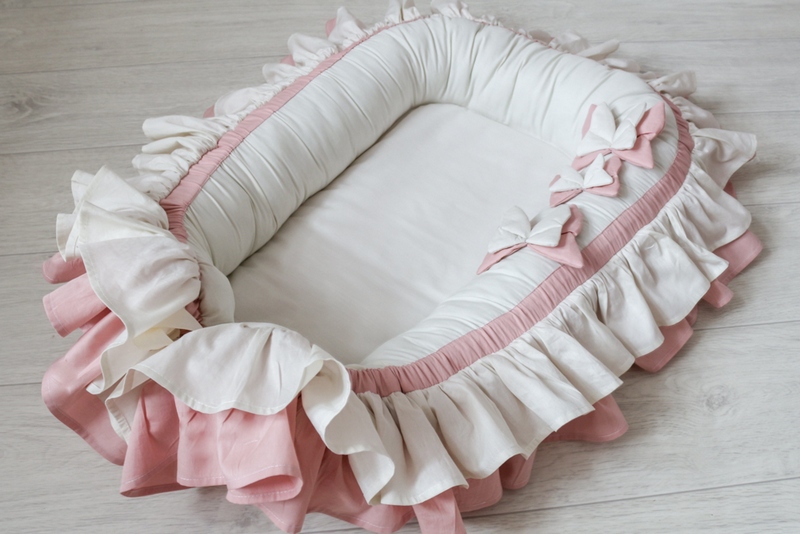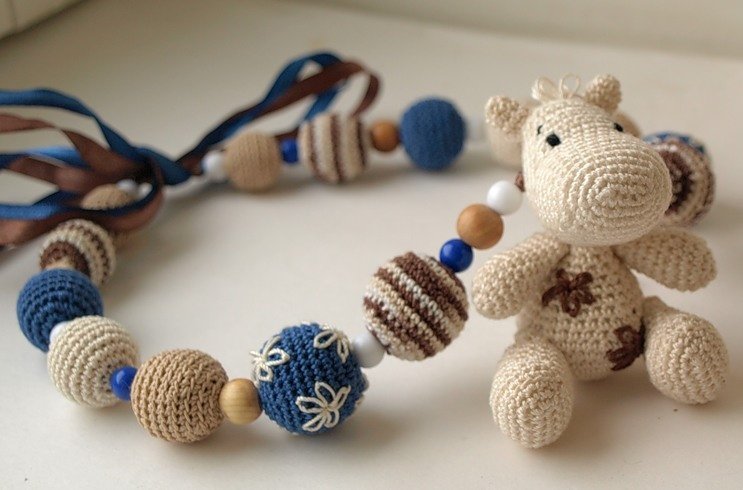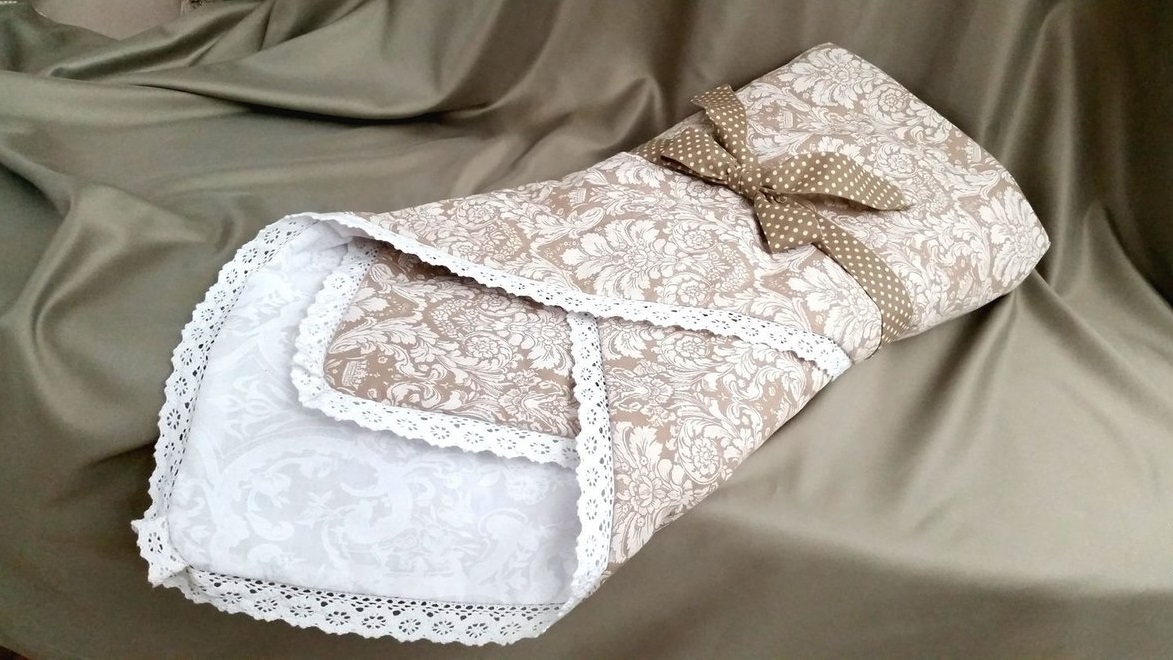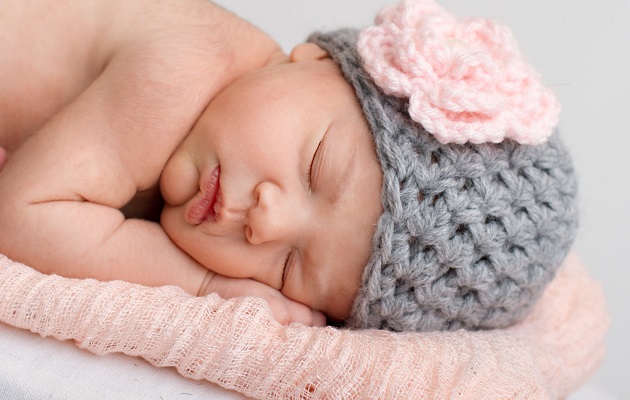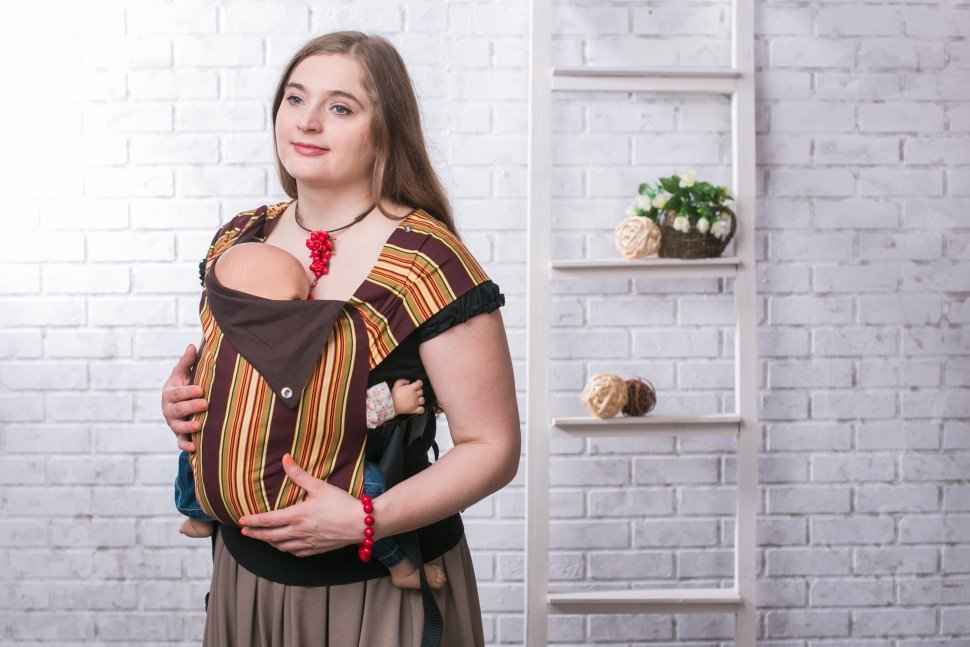Many accessories for babies can be made at home, saving money. A cocoon for newborns is very convenient and practical; any mother can make it with her own hands. The child feels comfortable and safe in it. The accessory is convenient to take with you on a trip or use at home.
Design features of the product
The cocoon-nest has a number of useful properties for the baby's health. It has low sides, an oblong shape, thanks to which the baby feels protected from all sides. The baby's position in this convenient accessory is very similar to the one in which he is in his mother's tummy. The cocoon creates a closed space, calming the baby, and allows the child to better and quickly adapt to the surrounding world. Previously, the item was used for children born prematurely, but due to its useful qualities, it began to be used for all children.
The benefits of a cocoon are justified if its design exactly copies the anatomical parameters of the baby. For this, it is very important to make exclusively individual patterns. The cocoon-nest must be sewn in such a way as to provide elasticity to the side rails and the mattress, they must retain their shape well. This is necessary for the convenience and safety of the baby. Also, when cutting out fabrics, it is important to make the correct calculation, because the accessory must correspond to the individual parameters of the child.

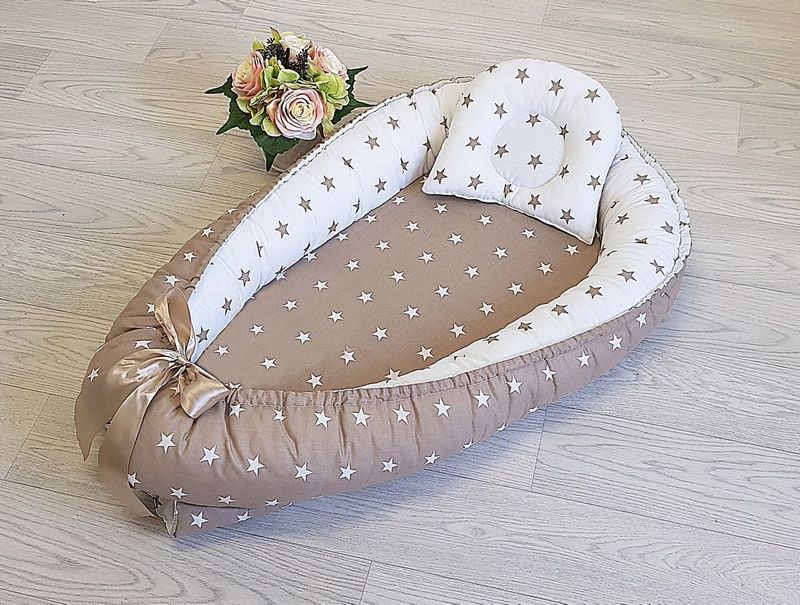
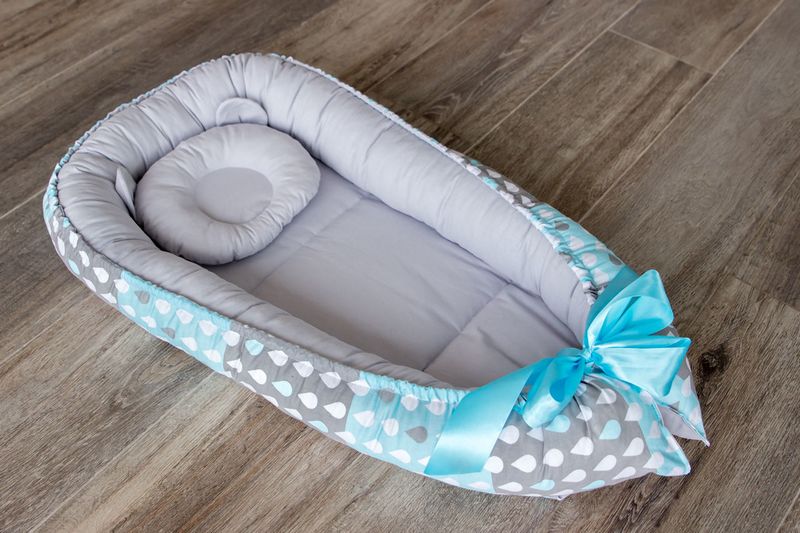
Selection of materials
When creating a cocoon for newborns with your own hands, you need to select only environmentally friendly materials. The fabrics must be natural and hypoallergenic. The material must be breathable so that the baby's skin does not get sweaty. You should also pay attention to the fact that the fabrics do not contain dyes.
Textile
When choosing a material, you should consider its density. Too thin fabric can easily be damaged. If you plan to use the cocoon for a second child, it is advisable to give preference to denser options. The best material for creating a nest is 100% cotton, it allows air to pass through well and can be processed at high temperatures. The material is durable, but compared to other fabrics, it takes a long time to dry.
You can sew an accessory from flannel, chintz, flannel, calico, jersey, fleece, linen or muslin. Features of some materials:
- Chintz is a thin fabric, often with a multi-colored print. It is inexpensive, lightweight, and breathable. The fabric is easy to wash, dries quickly, and is easy to iron. Cons: chintz is not durable, it can fade, and can burn out in the sun.
- Calico is a dense, wear-resistant cotton material. It is used for sewing clothes and bed linen. It is easy to wash without losing colors, “breathes” well, and does not cause allergies. Dust and bacteria do not accumulate on the fabric, and it does not become electrified. Disadvantages: some stiffness, not so attractive appearance (no gloss or shine), forms pellets, and wrinkles a lot.
- Flannel is a fairly dense fabric with a smooth, even pile. It is a breathable material, soft and warm, and also inexpensive. For babies, printed flannel is used (the pattern is applied to one side so that the baby's skin does not come into contact with the dye). The fabric does not shrink, can withstand many washes, and absorbs moisture well. The disadvantages are: it takes a long time to dry, wrinkles, and forms pellets.
- Linen is a very durable material. It is hygroscopic and breathable, does not irritate the skin, does not cause allergies. It retains heat, but is comfortable in hot weather. The fabric wrinkles very easily and has some rigidity.
An important parameter is the color. It is advisable to choose fabrics of muted tones. It is acceptable to use fabric of different shades with different prints.
Bright colors of materials can irritate the nervous system, so it is better to choose something from the pastel range for a child.
Filler
A baby cocoon must have a mattress. Its filler can be rolled or loose materials of natural or artificial origin. The former are best suited for the mattress, the latter - for the sides.
The cocoon is used for up to 4-6 months, so the filler must be selected in accordance with the season.
The following are used as loose fillers of natural origin:
- a mixture of feathers and down;
- cotton wool;
- wool;
- bamboo fiber;
- silk.
Among the artificial fillers, the most popular when sewing a cocoon for a baby are holofiber, polyester microfiber, and synthetic fluff. Roll fillers used when sewing a cocoon for a baby are sisal, latex, flax, coconut coir, memory foam. Cheaper are artificial options, such as holofiber, sintepon and woolstepon.
Natural fillers can cause allergic reactions. Also, the stuffing can wrinkle and lose shape, so the best option for creating a cocoon for a newborn with your own hands is holofiber. Down and feathers are hygroscopic, maintain comfort during sleep, but can cause allergies, and also have a short service life. Wool reliably holds its shape and retains heat, but requires regular cleaning. Bamboo filler is often used when creating a cocoon for a baby due to its softness and elasticity. It maintains an optimal microclimate, does not provoke allergic reactions, but loses strength at high humidity levels.
Artificial fillers are usually cheaper and are not capable of causing allergic reactions. They restore the original shape well, so a cocoon for children, where the mattress is made of holofiber, synthetic padding and wool, is preferable. In addition, artificial materials are much easier to form, due to which the mattress in the cocoon turns out to be as comfortable as possible.
Tools and consumables
To make a nest for newborns, you need to prepare the fittings, consumables and tools in advance. For work you will need:
- pieces of cotton fabric;
- sewing threads;
- lingerie zipper or satin ribbon;
- foam rubber or other filler;
- scissors, needles;
- sewing machine (optional);
- paper and pencil;
- lighter;
- ruler;
- pins;
- measuring tape.
The list may vary depending on the fabric chosen for the cocoon. A sewing machine is not required for use, as traditional cotton threads and a needle will easily do. You should also prepare materials for decorating the accessory in advance, such as satin ribbon. All accessories should not have sharp edges or be too small.
Measurements and calculations
Most models are available in two sizes: S and M. The first is mainly used in medical institutions for premature babies, that is, for those for whom it was originally designed. This size is designed for newborns up to 2–2.5 kg. The second is suitable for babies born at normal weight (up to 2.8–3 kg). This is the pattern that should be chosen when making a cocoon for home use. Less common is size L, suitable for larger babies.
It is important to choose a pattern of the right size so that the baby feels comfortable and cozy in the nest-cocoon from the first days, and it is not cramped for a long time. To determine the optimal dimensions of the product, it is necessary to take into account the child's weight and height. The standard size of the item is 30 x 65–67 cm (sleeping area). It is well suited for children up to 6 months. If you plan to use the cocoon in the 6-12th month of the baby's life, you need to create a product with a sleeping area of 40 x 80 cm, for larger toddlers - 45 x 95 cm.
Doctors do not recommend making a cocoon “for growth”; it should fit the child perfectly.
When making a cocoon, you should correctly calculate the required amount of fabric and filler. For premature and small babies, a size of 50 cm in length and 25–30 cm in width is suitable. For babies from 3 to 6 kg, you will need a pattern 65–70 cm in length and 30–35 cm in width. The fabric should be taken based on these dimensions, adding a reserve of 10–15%. Also, do not forget that there are several parts, so it is better to take a little more material depending on the chosen model.

Sequence of works taking into account the cocoon model
Knowing how to sew a cocoon, it is also necessary to choose the right model. Despite the simplicity of the product, there are several types of accessories, each of which has its own manufacturing nuances. The most popular options are a nest for a newborn, an envelope or a diaper.
Nest
If you are making a pattern for the first time, it is advisable to create it on paper and only then transfer it to the fabric. Experienced craftswomen do without additional actions. A simple master class consists of only a few steps:
- From two pieces of fabric of different colors measuring 95 x 65 cm, we make two identical patterns. The total width of the product is 62 cm, the space for the mattress is 30 cm. The length of the main part is 78 cm + "tails" for tying 14 cm each. The width of the last elements is 16 cm.
- Next, fold both fabrics face-to-face so that they face inward. Pin the edges and sew along the entire perimeter of the product, leaving only the bottom part free.
- In the next step, turn the product inside out and iron it carefully. Step back 2 cm from the edge and make a line again. The resulting hole will be used to insert the ribbon.
- We cut out the middle part for the mattress, and create the same part from padding polyester according to its dimensions. Then we pin all three layers together and sew them together. The stitching should not reach the bottom edge by about 2–3 cm.
To securely fix the padding, you can make more lines in the middle of the product. They will provide an additional massage effect. After that, using a pin, you need to insert the tape, fill the sides with holofiber. All free places must be stitched, the cocoon for sleep is ready.
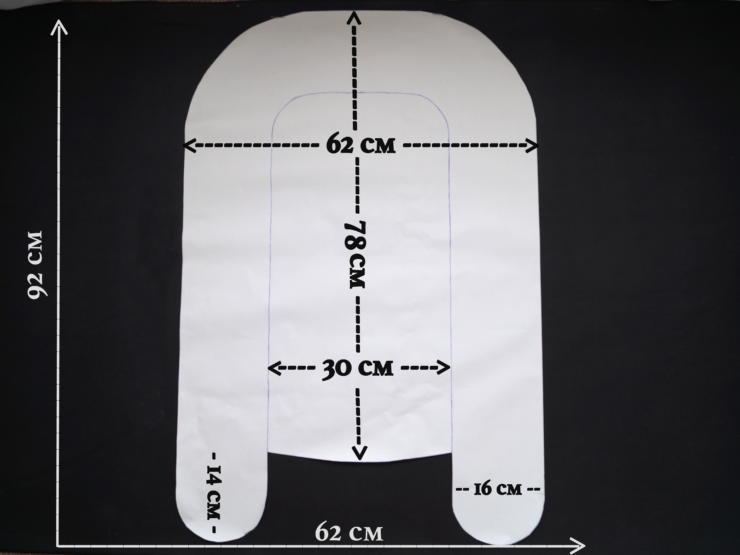

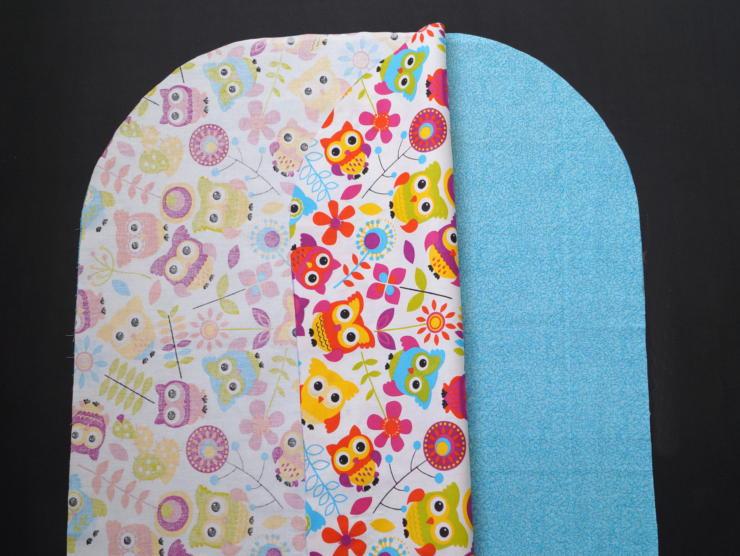
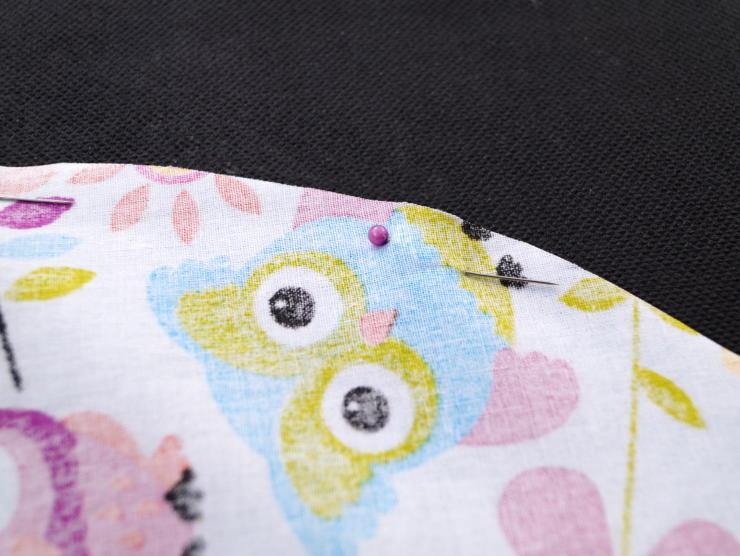
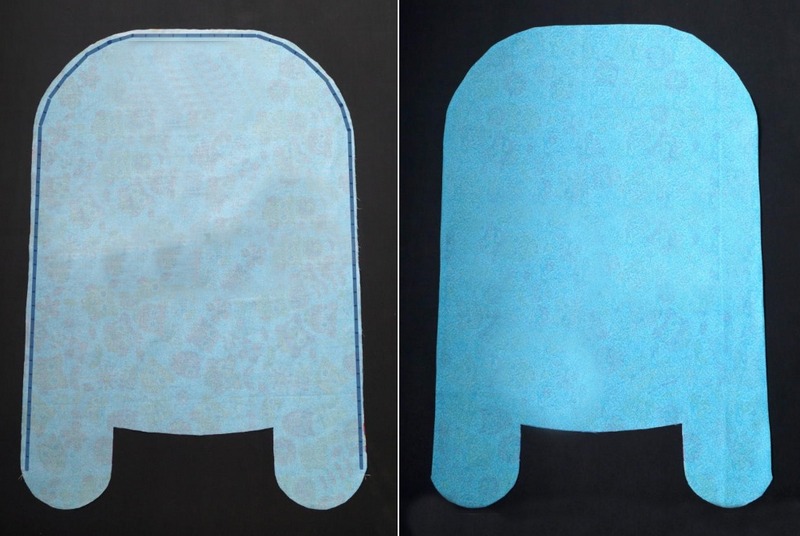
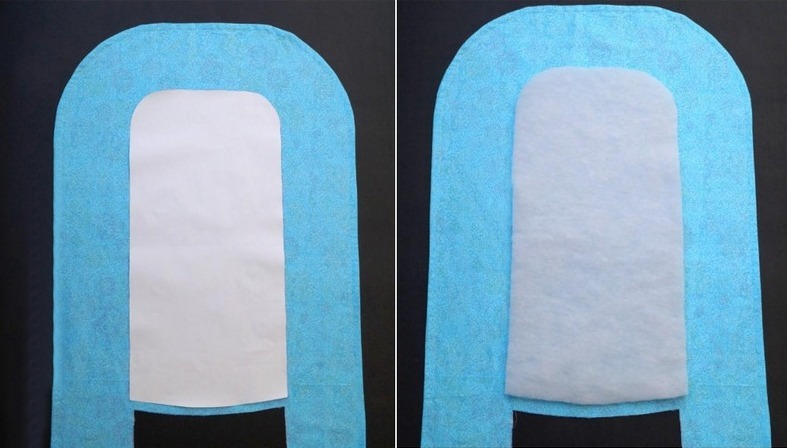


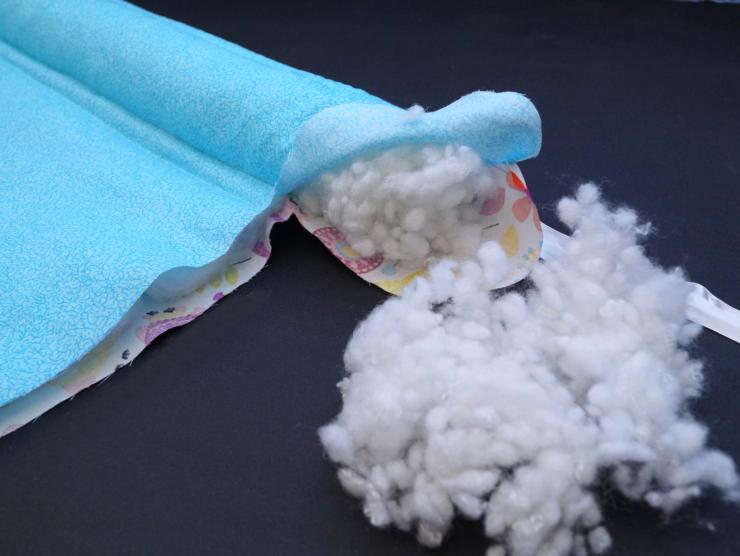
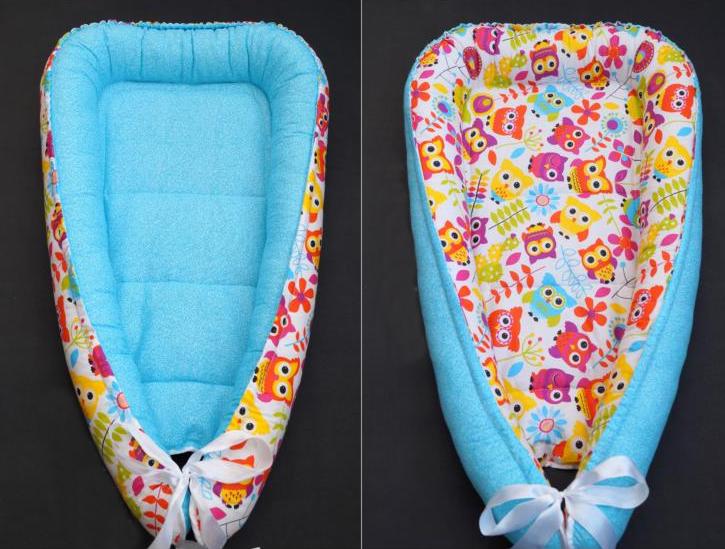
Envelope
The step-by-step instructions for creating an envelope are also not difficult. For work, you will need needles and threads, scissors, a tape measure, Velcro, insulation, cotton fabric for the outer part, fleece or plush for the inner part, and a 70 cm long zipper. The main part is cut out of fabric measuring 85 x 90 cm.
Next, we sew a pocket on the legs. If the envelope is for the demi-season, leave the dimensions at 50 cm, if for the winter, increase them by 10–15 cm. It is easier to cut all the details out of three layers (fabric and insulation) at once. Sew all the elements together. If you do not have an overlock, you can use a piping or make a seam in the form of stripes at the same distance.
We fold the upper part with the right side up and sew it from the wrong side. This is how the hood is formed. We make the inner part from plush in the same way as the outer part from cotton material. We make small cuts at the corners and sew in the zipper. Where the zipper ends, we need to leave an opening so that we can turn the envelope inside out. In the next step, we sew the zipper to the pocket, and then connect both parts (the main part and the pocket) together. At the end, we sew on the Velcro fastener.

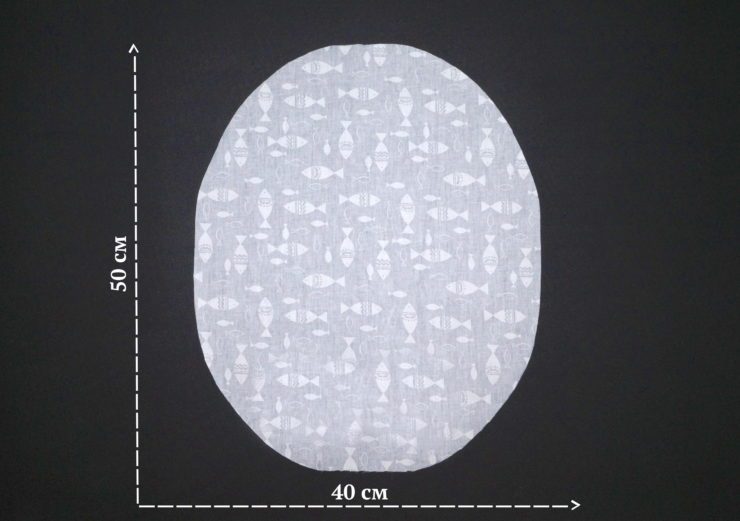

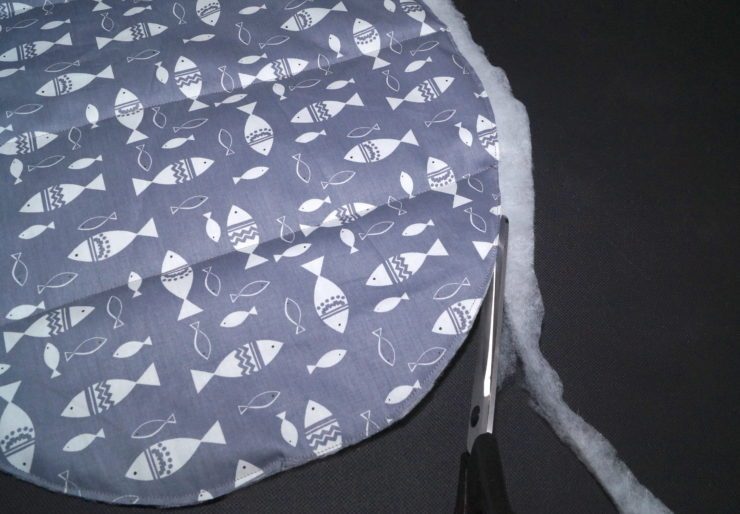
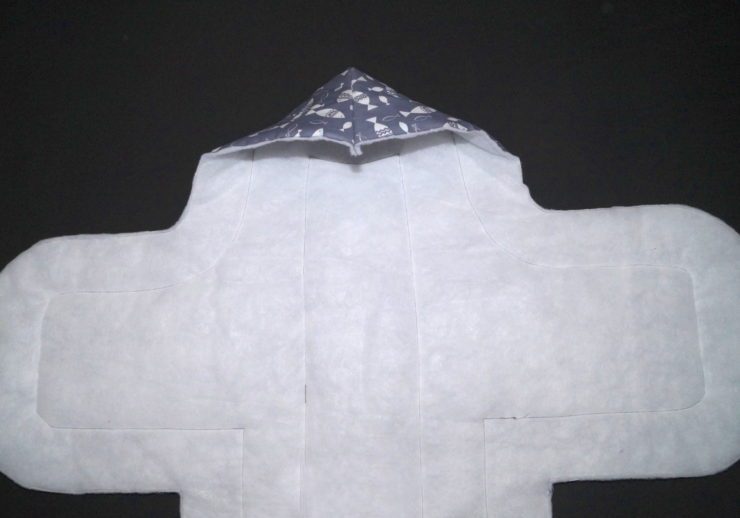
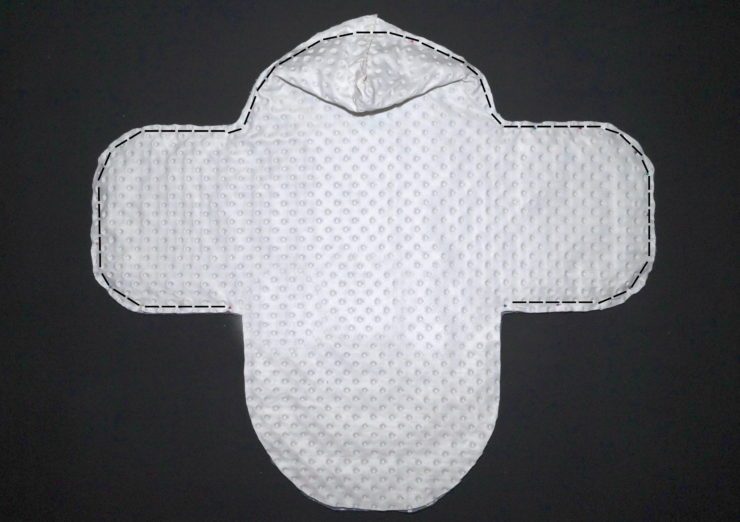


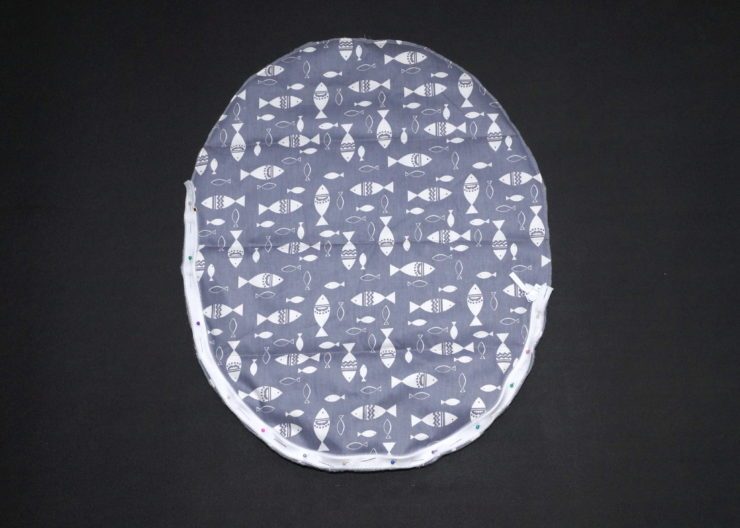
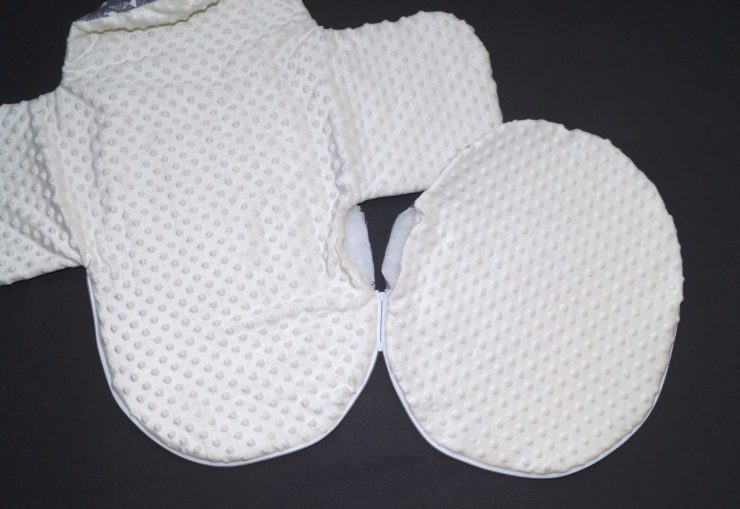
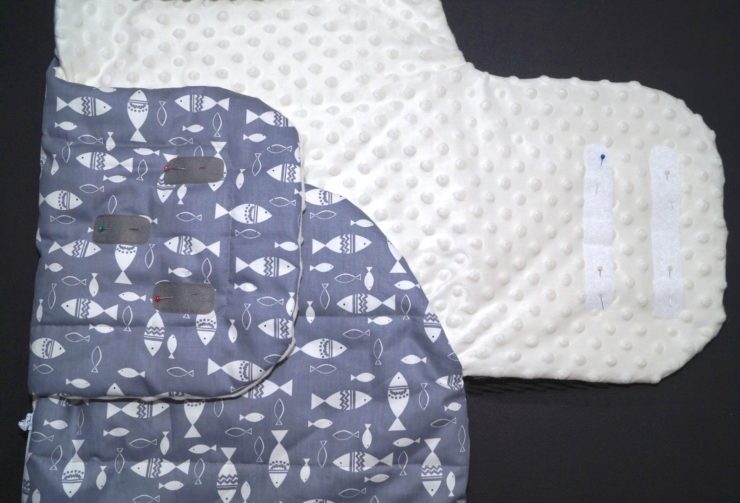
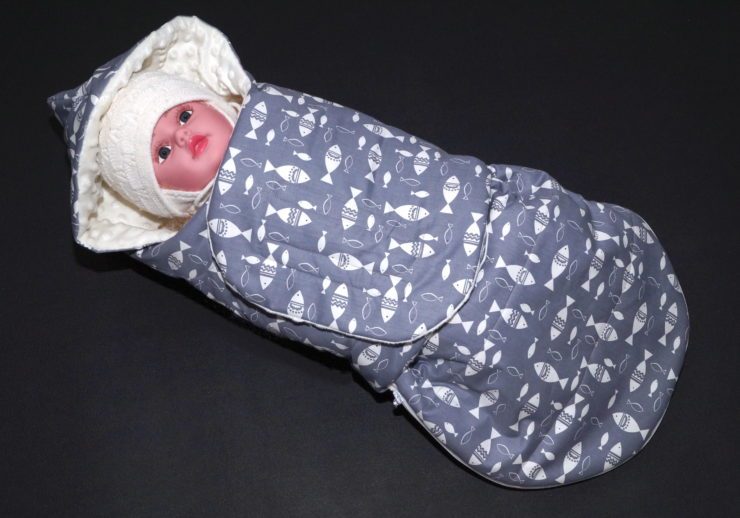
Diaper
Knowing how to sew cocoons for a newborn of this type, it is convenient to make several at once (warm and summer). The craftswoman will need scissors, threads, a tape measure, Velcro, pins and a piece of fabric. First, a pattern must be made from the material, its dimensions are calculated for children from birth to 3 months. The shape of the diaper resembles a mushroom with a large hat. The piece of fabric should be 50 x 65 cm. Two such parts must be sewn from the wrong side, be sure to leave a gap at the bottom. In places of folds and rounded parts, you need to make cuts, turn the product inside out and iron.
The next step is to make a pocket for the legs. The element should exactly repeat the bottom part of the diaper and be 10 cm higher than it. The pocket is sewn using the same principle and then attached to the base. All that remains is to cut the tape with Velcro (its total length should be 24 cm). The hard side of the element is divided into 3 parts measuring 8 cm each, the soft side is cut into 2 parts (14 and 10 cm). Then the Velcro is attached to the sleeves, and the product is ready.
It is advisable to use 2 layers of fabric to make the diaper, otherwise you will have to trim the edges with piping.
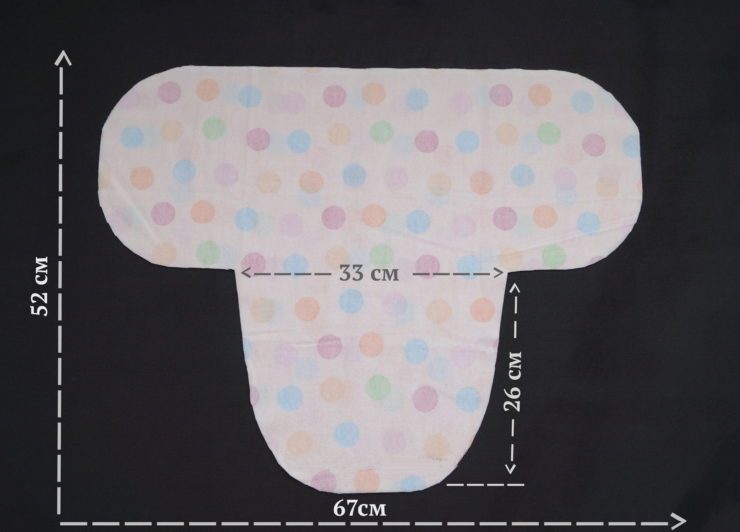

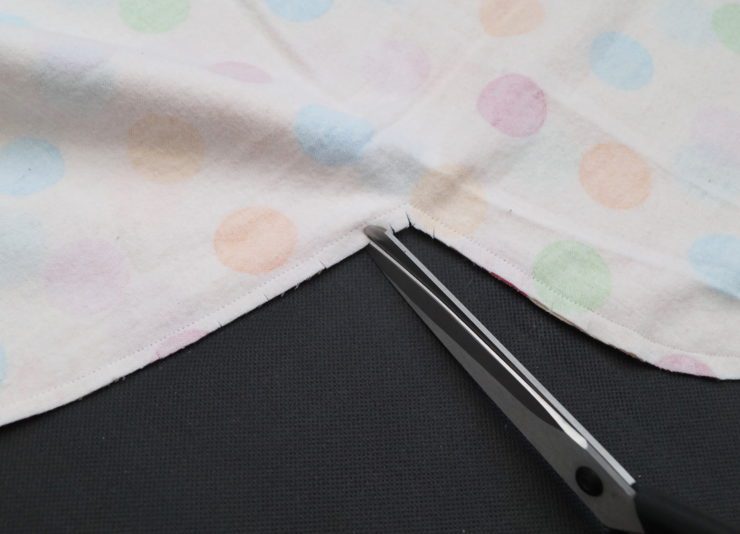
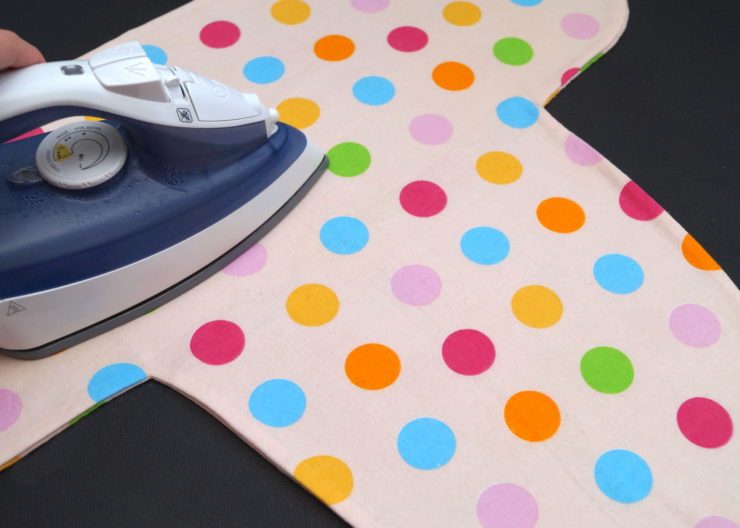



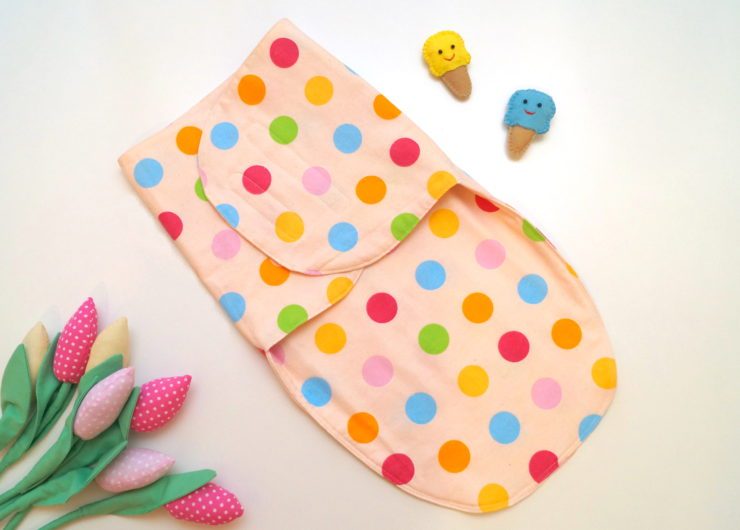
Safe decor
The decoration of the cocoon made for the baby can be done using various materials. Ribbons and braid are mainly used. It is also acceptable to decorate the accessory with lace. Less often, the product is sewn using decorative buttons. Regardless of which option is chosen, the decor must meet the following requirements:
- have no sharp corners;
- securely attached to the base;
- be medium or large in size (a child can put small parts in his mouth);
- do not have long fringes or threads so that the baby does not get tangled in them.
The ribbon is considered the most convenient option, since it is easy to tie and untie, it looks cute and cannot harm the baby. Moreover, you can make the cocoon beautiful using different fabrics, for example, a delicate plain one on top and a contrasting one with a pattern inside. Such a tandem, complemented by a ribbon, will look unusual and elegant. Excessive decor only interferes and complicates the process of caring for the product.
Video







